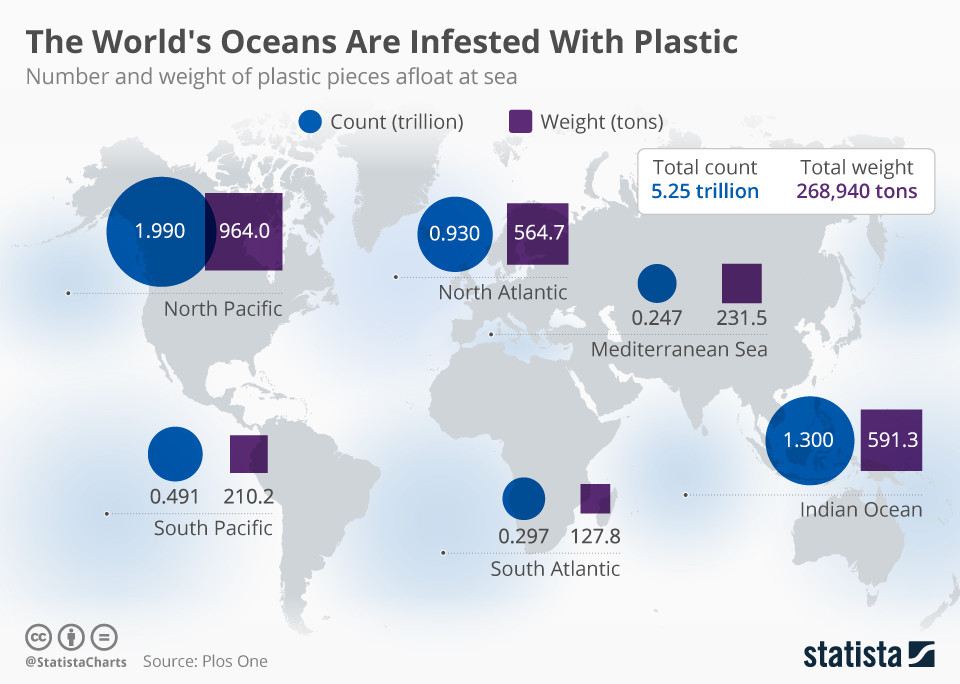The origin of the movement to ban plastic straws may come as a surprise: It began with a 9-year-old boy named Milo Cress and his 2011 campaign, "Be Straw Free," which launched to raise awareness about plastic waste.His big finding? Americans use more than 500 million drinking straws daily, enough to fill 125 school buses. That figure has become highly touted since, referenced in straw ban coverage from The New York Times and National Geographic to reports from the National Park Service (and USA TODAY).Now 16 years old, Cress just finished his junior year of high school and finds himself the face of a movement felt by global chains from Starbucks to McDonald's. But it's not without criticism — especially of his 500 million stat.It started years ago when Cress noticed a trend while out to eat. He would see people take the plastic straws out of their drinks and put them on the table — never actually using them.This didn't sit right with Cress. It felt like such a waste."I thought if restaurants were to offer a straw instead of serving them with every drink automatically, it could really reduce the number of straws that we use," he said.Not only was it a cost saver, but it also made customers more aware of plastic they use and eventually throw away, Cress said — especially straws, which have a short-use span but a 200-year lifespan.Cress talked to restaurants, politicians and peers. His philosophy picked up traction. The idea was digestible, easy enough to understand and practice.But as Cress began to dig into research on plastics and the environment, he noticed there wasn't much data: "I couldn’t find anything on our use of straws in the United States," he said.So he called straw manufacturers himself, asking what they estimated to be the straw market in the United States per day. Some gave him a yearly estimate, which he divided by 365."Others gave an estimate of around 500 million straws," Cress said. "That was the number that I stuck to, because it seemed to be around the middle of what they were saying."But with national coverage of Cress' statistic came criticism: Conservative-leaning outlets such as Fox News, Washington Examiner, and Reason, aimed to debunk the figure.The teen is aware of objections to the less-than-verified stat."Why I use this statistic is because it illustrates that we use too many straws," he said. "I think if it were another number, it still illustrates the fact that there is room for reduction. That’s really my message."Eco-Cycle, a Colorado-based recycling nonprofit that partnered with Cress' campaign, trusts his statistic. If anything, said Eco-Cycle communications director Harlin Savage, 500 million straws per day could be too low. And if anyone has come up with a different figure, Savage — plus a lot of other people, she said — would like to see it. She applauded the teen's efforts.“He saw a problem and it really bothered him, and he decided to do something about it,” Savage said. “He’s a wonderful role model.”...MORECorrections & Clarifications: An earlier version of this article misstated the estimated amount of plastic produced globally since the mid-1950s, which is 8.3 billion metric tons.
The fact of the matter is we have to stop plastic getting into the oceans. You've probably seen the pictures of the Caribbean:

That's water underneath the plastic.
World News Canada has video shot off the Dominican Republic on July 14. It is stunning.
And finally, from the World Economic Forum, June 8:
90% of plastic polluting our oceans comes from just 10 rivers
Over the last decade we have become increasingly alarmed at the amount of plastic in our oceans.
More than 8 million tons of it ends up in the ocean every year. If we continue to pollute at this rate, there will be more plastic than fish in the ocean by 2050.
But where does all this plastic waste come from?
Most of it is washed into the ocean by rivers. And 90% of it comes from just 10 of them, according to a study.
Rivers of plasticBy analyzing the waste found in the rivers and surrounding landscape, researchers were able to estimate that just 10 river systems carry 90% of the plastic that ends up in the ocean.
Eight of them are in Asia: the Yangtze; Indus; Yellow; Hai He; Ganges; Pearl; Amur; Mekong; and two in Africa – the Nile and the Niger.
"We were able to demonstrate that there is a definite correlation in this respect," said Dr. Christian Schmidt, one of the authors of the study from the Helmholtz Centre for Environmental Research. "The more waste there is in a catchment area that is not disposed of properly, the more plastic ultimately ends up in the river and takes this route to the sea."
Schmidt and his team found that the quantity of plastic per cubic metre of water was significantly higher in large rivers than in small ones.

Image: Statista
The rivers all had two things in common; a generally high population living in the surrounding region – sometimes into the hundreds of millions – and a less than ideal waste management process.
The Yangtze is Asia’s longest river and also one of world’s most ecologically important rivers. The river basin is home to almost 500 million people (more than one third of China’s population). It is also the biggest carrier of plastic pollution to the ocean....MORE